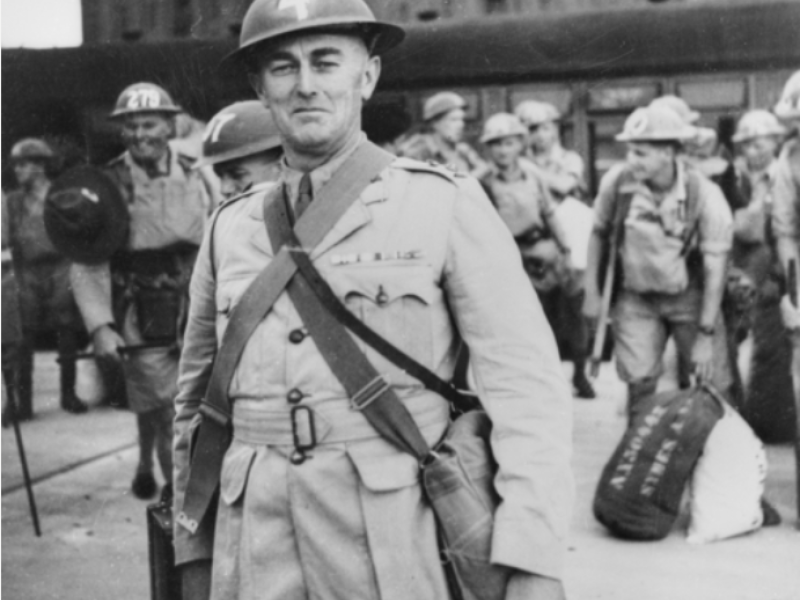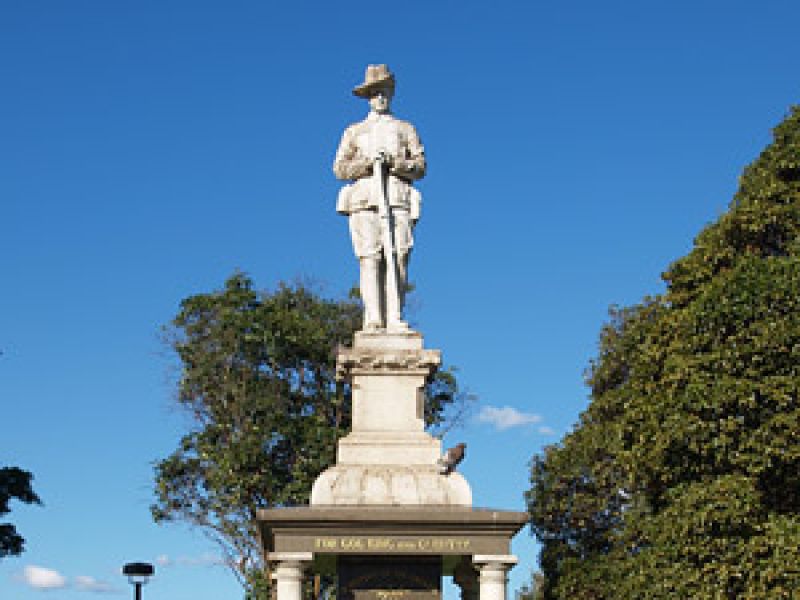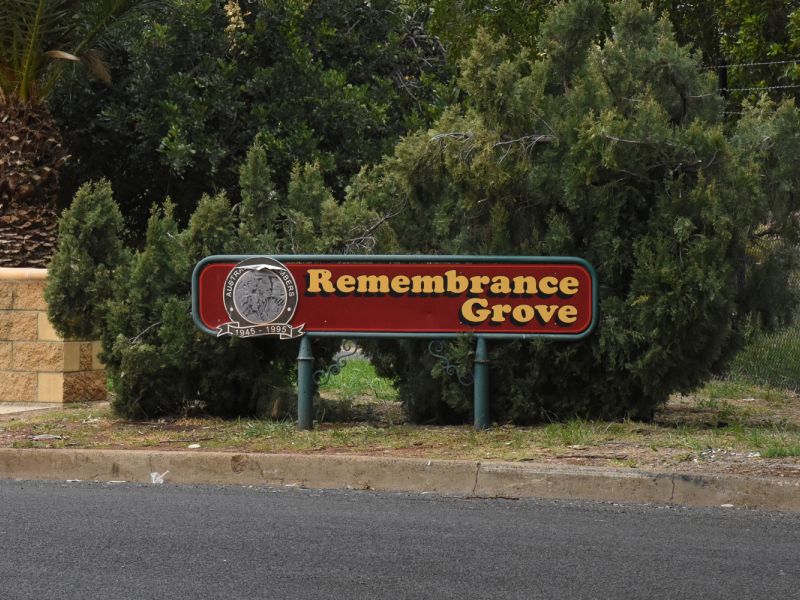Brigadier Arthur Leslie Varley, 22nd Infantry Brigade
Born in Lidcombe, Sydney in 1893, Varley worked as a clerk before his enlistment in the AIF in August 1915. He arrived in France in 1916 with the 45th Battalion and soon saw action. Following the fighting at Pozières, he was promoted to lieutenant.
In 1917 at Messines, Varley took control of two companies that had lost all their officers, and successfully organised a counter-attack on the German positions. For his “coolness under fire and utter disregard of personal danger”,Varley was awarded the Military Cross.
Promoted to captain, Varley added a bar to his MC for his leadership under heavy fire near Hamel, France, in August 1918. He was later Mentioned in Despatches.
Returning to Australia in 1919, Varley married Linda Middleton. They had three children before Linda died in 1925. He remarried and ran a stock-and-station agency at Inverell, New South Wales. Following the outbreak of the Second World War he was seconded to the 2nd AIF as a Lieutenant Colonel, commanding the 2/18th Battalion.
In 1941, the 2/18th was sent to Malaya. Following Japan’s entry into the war in December, Varley successfully ambushed the enemy near Mersing in January 1942. He was promoted to brigadier and given command of the 22nd Infantry Brigade.
By early February and after fierce fighting, Singapore fell to the Japanese and Varley became one of 45,000 Australian and British POWs.
In captivity, Varley was given command of “A Force”, a work party that left Changi in May 1942 for Burma. Varley was in charge of a 3,000-strong POW workforce used by the Japanese to construct the Burma–Thailand Railway.
He did the best he could in dismal circumstances to ensure better treatment of his men. He sold the effects of the dead to buy food for the sick, and suggested a proposal to the Japanese to allow the older men unfit for heavy work a lighter garden duty. This proposal was unsuccessful.
Fellow officer Lieutenant Colonel Charles Anderson VC wrote of Varley’s “strong personality” and his “vigorous and fearless championship of the troops”.
In September 1944, the remaining “A Force” was sent to Japan onboard the Rakuyo Maru and Kachidoki Maru. On 12 September, the convoy was attacked. The Rakuyo Maru was hit by a torpedo from the USS Sealion, and shortly after, the Kachidoki Maru was sunk by the USS Pampanito.
It took 12 hours for the stricken Rakuyo Maru to sink. An orderly evacuation was made and in the water many clung to debris while some got to lifeboats. Over the following days, Japanese destroyers rescued around 500 survivors and American submarines picked up 150, but a total of 1,559 Australian and British prisoners were killed in the sinking of the two ships.
A leader to the end, Varley was last seen commanding a group of seven lifeboats. They were never seen again.
Varley’s eldest son, Jack, also a distinguished soldier, was awarded the Military Cross in Malaya. His youngest son, Robert, was killed in action in New Guinea in 1945.
- Australian War Memorial https://www.awm.gov.au/collection/P11036118

 Australian War Memorial
Australian War Memorial
